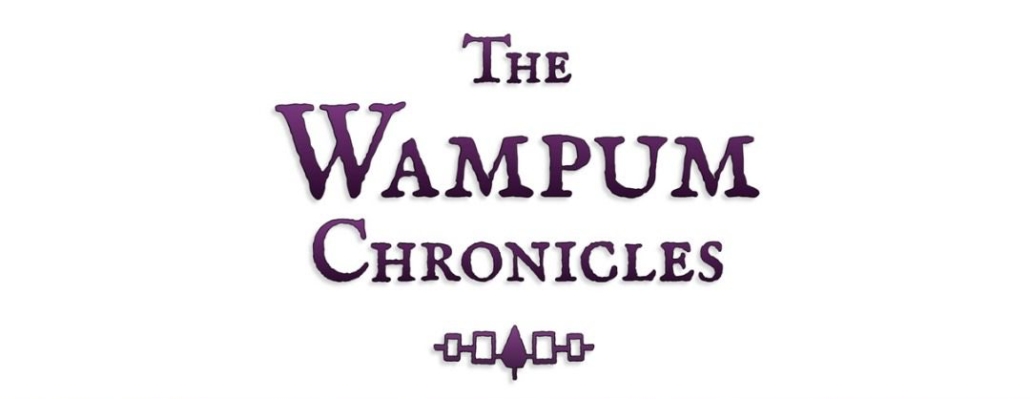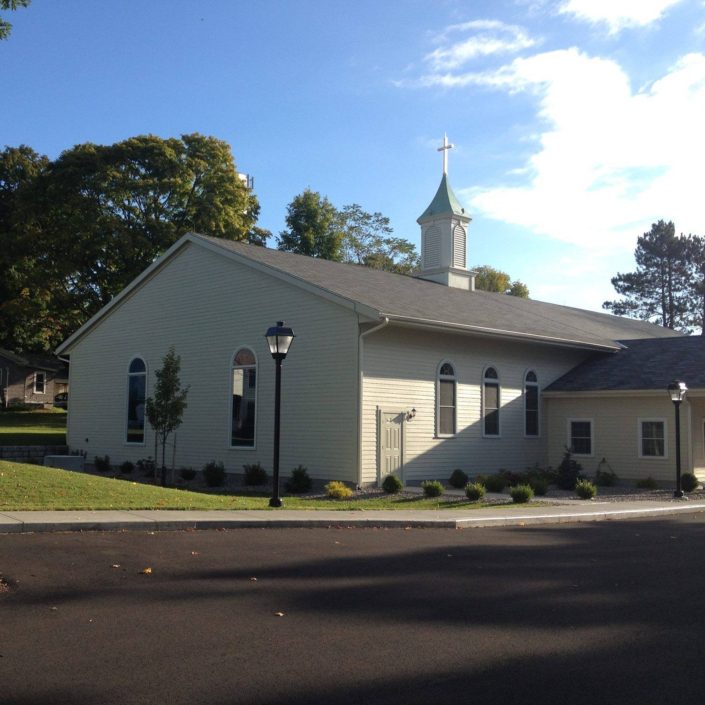
Land Where The Partridge Drums
A History of the Akwesasne Mohawk Nation
In the Shadow of Serpents:
Trials and Tribulations of the Early 1800’s
The Battle at St Regis
Written and illustrated by Darren Bonaparte
Before the conflict began, English and American authorities agreed that Akwesasne would remain neutral in the war. This was not to be. As many as 80 warriors were recruited from Akwesasne to fight for the British in the summer of 1812. While they were gone, the British stationed a detachment of troops at Akwesasne for a brief time in the fall, violating the neutrality agreed upon by the British and the Americans. These troops were mostly French Canadian voyageurs from Montreal. One would assume that they set up their command post within the Catholic Church’s fortified stone walls. Not long after the garrison arrived, William Gray guided a small force of American troops from French Mills (present-day Fort Covington, New York) to the eastern shore of the St. Regis River, opposite the British garrison, but they were unable to cross the river. Major Guilfred Dudley Young and his troops returned a few days later and crossed the river by raft at Gray’s Mills (Hogansburg), then proceeded north to St. Regis. Accounts vary on what happened when they arrived the next morning. One says the garrison was taken with three killed, 25 captured, and without the British firing a single shot in their defense. Another says the British lost as many as eight men in combat and 23 were taken prisoner. Yet another says five were killed and 40 taken prisoner; still another gives the number killed as four. Immediately following the battle, the American troops ransacked the homes of the natives, seized their possessions, and arrested the missionary, Father Jean Baptiste Roupe. The victorious Americans later marched a captured British flag through the streets of Albany to celebrate, but the British successfully launched an attack of their own against French Mills not long thereafter. It is recorded that a band of Mohawks from Kanesatake and Akwesasne took part in this battle. (Hough 1853:156-157; Sellar 1888:68-71; Wilder 1987:9)
Mohawk Involvement in the War
The Mohawks who left Akwesasne to fight in the war were stationed at Kingston during the taking of Little York. Thirty were present in the advance on Ogdensburg in February of 1813. Twenty saw action at Sackett’s Harbor near Alexandria Bay in May of that same year. Some were stationed in Cornwall during the battle at Chrysler’s field but did not fight. (Hough 1853:156) In October of 1813, a force of 350 Mohawks from Kanesatake and Kahnawake, along with French and British forces under Colonel Charles de Salaberry, prevented an American force 4000 strong from attacking Montreal. A combined force of Kanesatake, Kahnawake, Akwesasne, and Six Nations Mohawks proved to be the decisive factor in the “British” victory at the Battle of Beaver Dam in 1813. One account of this particular battle was given in a book called The War With The United States:
“All the thickets, woods, creeks, and swamps, were closely beset by a body of expert persistent Indians who gradually increased from two hundred and fifty to four hundred men. They were all in excellent touch with each other. Lieutenant Fitzgibbon, who commanded them, generously acknowledged that ‘not a shot was fired on our side by any but the Indians. They beat the American detachment into a state of terror.'”
Major John Norton gave his own assessment of the battle in his journal:
“…the Cognawaga Indians fought the battle, the Mohawks (of Six Nations) got the plunder, and General Fitzgibbon got all the credit.” (Blanchard 1980:308)
Next week: The Battle of Chippawa
By Darren Bonaparte, historian and author of The Wampum Chronicles. Reprinted with permission.
Darren Bonaparte is a cultural historian from the Akwesasne First Nation. He is a frequent lecturer at schools, universities, museums, and historical sites in the United States and Canada. He has written four books, several articles, and the libretto for the McGill Chamber Orchestra’s Aboriginal Visions and Voices. Darren is a former chief of the Mohawk Council of Akwesasne. He is the creator of The Wampum Chronicles and historical advisor to film and television. He currently serves as the Director of the Tribal Historic Preservation Office of the Saint Regis Mohawk Tribe.














